An Eastern spice with a pungent smell - and a lot to offer. It imparts a remarkable onion and garlic flavor, with a good dose of umami to cooked dishes. It has a sulfuric scent that becomes an aroma similar to garlic and leek when cooked.
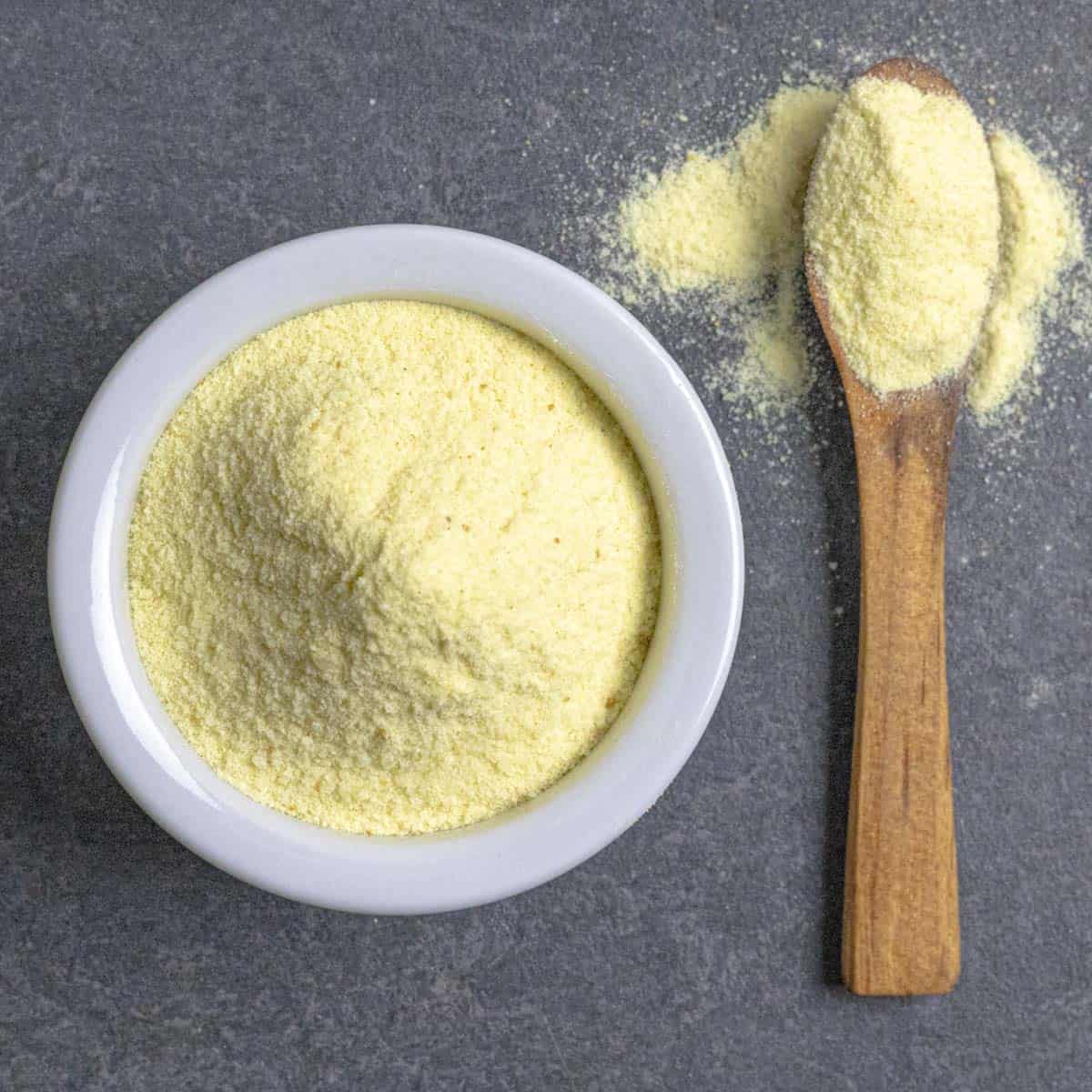
Jump to:
Asafa-what? An Eastern spice used in many indian dishes, use asafoetida, pronouced (ass-uh-fe-teed-uh), in any dish where you want an onion or garlic flavor. It can enhance the flavors of other spices and can make any recipe exceptional.
Asafoetida is also a low-FODMAP spice and is a great option to use as a substitute for garlic and onion. Be sure to stop by my Low-FODMAP Recipes category for more Low-FODMAP inspiration.
However, if you don't have any handy and are looking for an asafoetida substitute, I've included a few options to try.
This novel spice is a great addition to recipes without onion or garlic. I use it in Fish Stew with Turnip and Fennel as well as my Low-FODMAP Seasoning for BBQ. It adds a touch of magic to Pisto Manchego and when used as an ingredient in my Keto Seasoning for Barbecue, these Traeger Beef Ribs develop an incredible bark with amazing flavor.
What is asafoetida spice?
Asafoetida is considered to be an Indian spice and is often used in Indian and Middle Eastern cooking. It originates from Afghanistan and Iran, where most of it is grown.
A spice made from the dried sap of a plant called ferula, a variety of giant fennel, asafoetida has upwards of 10% essential oils from mostly sulfur compounds. It has a strong, pungent smell sometimes referred to as 'fetid'. In raw form, many know it as 'hing' or 'devil's dung', due to it's funky odor.
What is the meaning of 'hing'?
Hing, pronounced (heeng) is the Hindi word for asafoetida. Many Hindu sects do not eat any members of the Allium genus including garlic, onion, shallots, chives, and scallions. Orthodox Brahmins and Jain Indians are prohibited from using onion and garlic for religious reasons, and use hing as a garlic and onion substitute.
Is asafoetida low-carb and FODMAP-friendly?
Yes! You can feel good about adding 'hing' to your list of low-carb keto and low-FODMAP spices. Use it as a great addition to many no onion, no garlic recipes. It makes a great low-FODMAP seasoning - and a little goes a long way.
If you follow a gluten-free diet, be sure to check the ingredient label. Some manufacturers blend the raw powder with wheat flour or starch, rather than a grain-free binder, such as acacia gum.
For those of us who need an onion powder substitute or a garlic powder substitute because we can’t eat onions and garlic, I consider this a pantry staple.
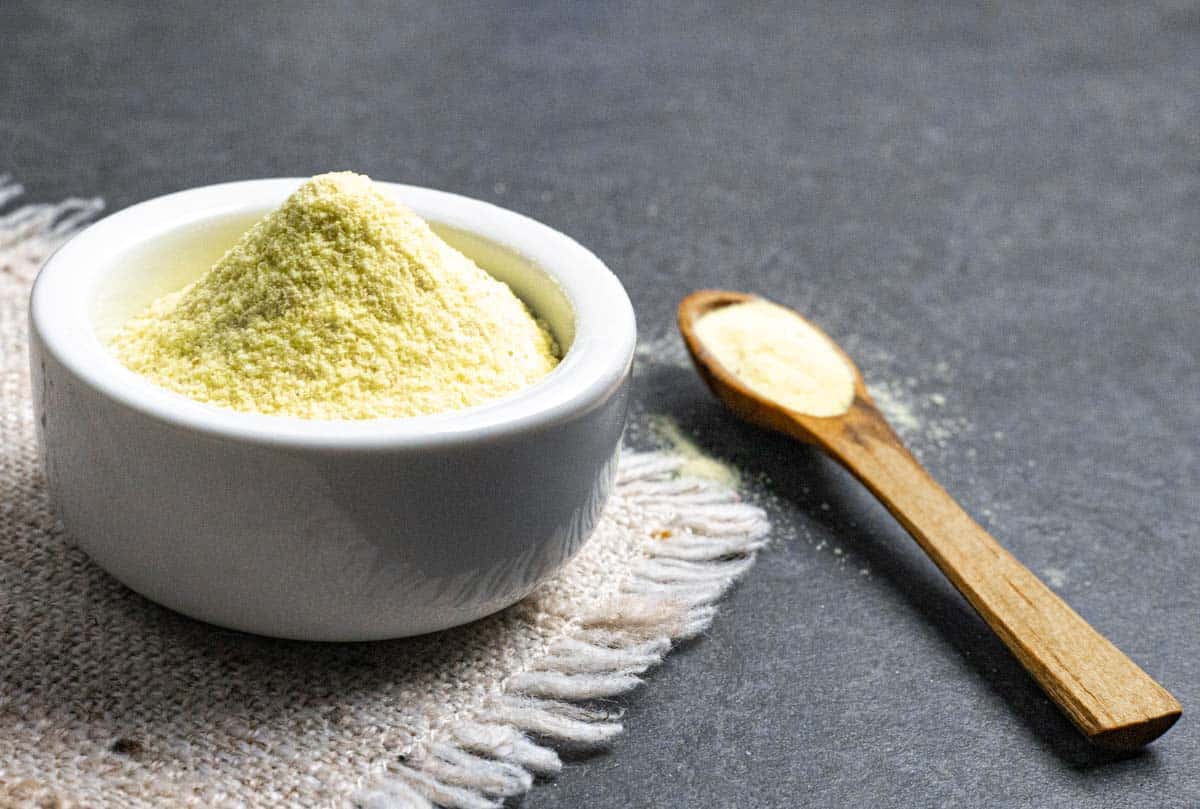
Health benefits
In Ayurvedic medicine (also known as Ayurveda), asafoetida has many medicinal uses, ranging from topical applications to digestive and throat maladies. There is some evidence that the chemicals in asafoetida can help treat IBS (irritable bowel syndrome) and may be beneficial in lowering triglycerides. The ancient Romans used it as an aphrodisiac and to soothe stomach pain. They also considered it to be a Food of the Gods (to which I'm in total agreement).
Asafoetida can be found sold in capsules as a dietary supplement. Therapeutically, it's used to treat respiratory infections, chest congestion, phlegm, menstrual problems and is used for its anti-aging properties. However, it may act as a blood thinner and also lower blood pressure. Those on anti-hypertensive or anti-coagulant medications or are pregnant or breast feeding should probably avoid asafoetida supplements (or at least consult your health care provider).
How to use asafoetida
When using asafoetida, start small. The flavor can overwhelm a dish if used too generously. Traditionally, a small amount of powder (usually just a pinch) is added to oil or ghee at the sautéing or frying stage of a recipe. Add it to dishes such as soups, stews, curries and dal, or any dish that calls for onion and garlic. It also makes a great leek substitute.
Here are a few ideas to try:
- Use in sautéed vegetables or stir fry: Sprinkle a few pinches in oil before adding the vegetables. After sautéing for about 30 seconds, add the veggies and other spices. Try adding some to Homemade Cauliflower Rice.
- Add a few pinches to spice blends or rubs that will be used for cooking. It tastes wonderful in my low-FODMAP barbecue seasoning and low-FODMAP taco seasoning. I also love to use it in my homemade Tikka Masala Paste recipe.
- When preparing the base of any soup, stew or casserole, add a few pinches for an extra savory flavor
- Use it for paneer recipes without onion or garlic, such as paneer butter masala. Add a few pinches when sautéing other spices during the first stage of cooking and eliminate the garlic and onion.
For extra umami flavor in any dish, asafoetida's flavor pairs amazingly well with kala namak black salt (which is one of my favorite things, ever). You can read more about kala namak in my Ingredient Spotlights).
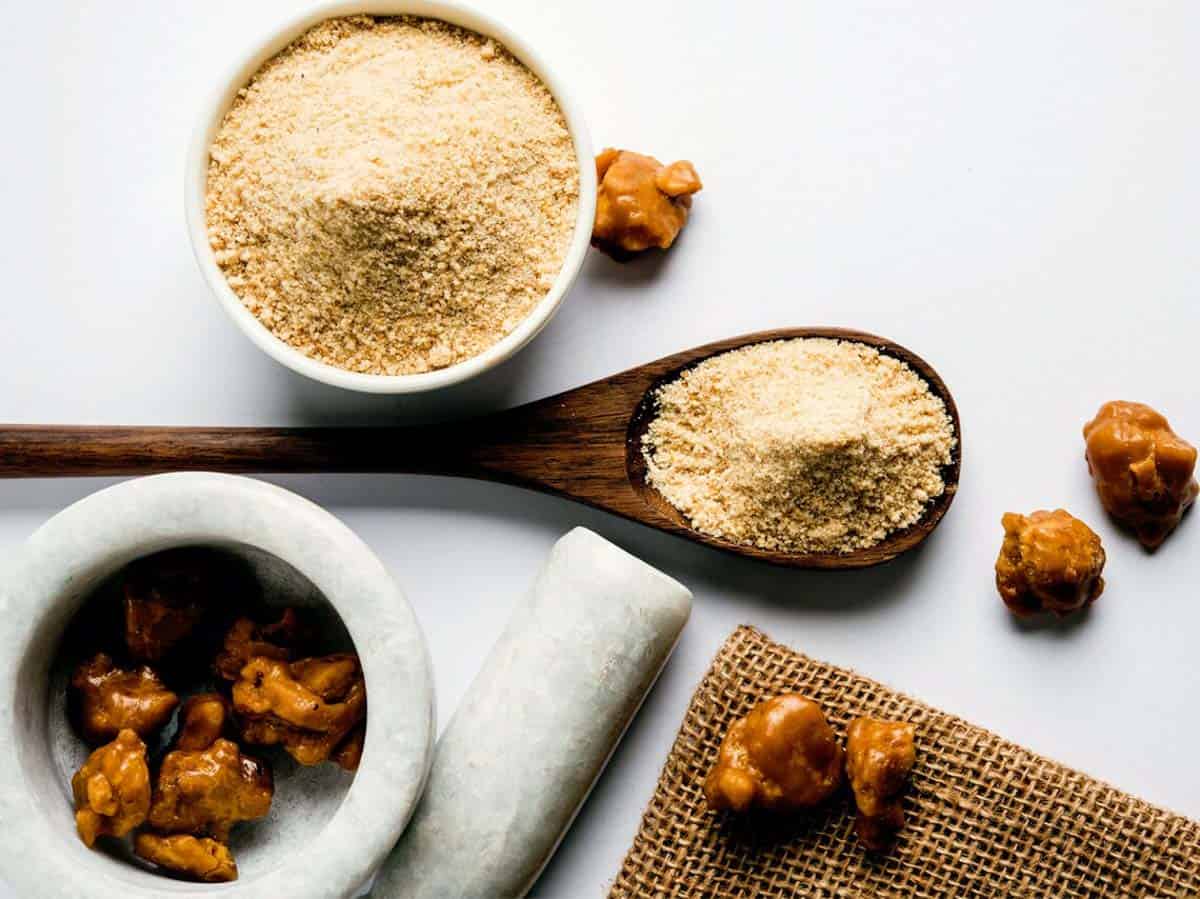
Where to buy
Purchase asafoetida either as a powder or in its raw resin form and then grind it into a fine powder. You can find ground asafoetida powder at many grocery stores, international food markets and online. Often, you will find it labeled as 'hing'. You can also find whole asafoetida resin online.
How to store
Store asafoetida in a tightly sealed, airtight container or spice jar to keep its volatile oils and essence from fading.
Asafoetida substitute
If you don't have any on hand, and are looking for a substitute for asafoetida, here are a few options. You can find recipe measurements in the recipe card.
- If you are not following a low-FODMAP Diet, you can use garlic powder and onion powder to impart a similar flavor. You can use them each independently, or combine the two (see recipe card). Since hing is so strong, and used in such small quantities, you will want to use a bit more onion and garlic. Start small so as not to over-power your dish.
- Powdered or fresh chives - If using dried chives, you can create your own powdered chives by grinding them in a spice grinder or mortar and pestal. Once powdered, start with the same quantity as the recipe calls for asafoetida, then add more to your taste. When using fresh, chop finely and use twice as much as the recipe calls for.
- Fresh, powdered or dried leek - use about 3 times the amount of leek in place of asafoetida that the recipe calls for. If using fresh, chop very fine, and be aware that leek will add additional volume your recipe. If you follow a low-FODMAP diet, dried or powdered leek may not be a FODMAP-friendly spice, as the white part of the leek is often included in most products.
- Fennel Seeds - use sparingly, starting with half the quantity of asafoetida your recipe calls for. It is a bit sweeter, and you can grind it into a powder using a mortar and pestal or spice grinder, or you can buy ground fennel seed.
- Shallots - these are a relative of onions and part of the Allium family. Slice thinly and sauté in butter, ghee or oil. Quantity to use depends on your taste. Dried shallots are also a great option. You can grind these in a spice grinder or use a mortar and pestle to make a powder, to distribute their flavor throughout the dish. Avoid these for low-FODMAP.
- Onion paste - puree sautéed onions in a food processor, and add to taste in your recipe - or purchase onion paste online. Skip this one for low-FODMAP.
- Garlic scape powder - this is a great low-FODMAP seasoning. Use in a 4:1 ratio for asafoetida substitution.
- Garlic flakes - use as a simple substitute. Use 1 teaspoon for each ¼ teaspoon of asafoetida in a recipe. Keep in mind, garlic is high-FODMAP.
- Celery seed powder - use twice the quantity as asafoetida in your recipe
- Consider using kala namak black salt in place of regular salt and adding ground, dried porcini, dried oyster mushroom powder or dried shiitake mushroom powder to your recipe for extra umami. These are all staples in my house and I add them to many spice blends and recipes. Read more about kala namak black salt and other spice blends in my Ingredient Spotlights.
FAQ
Yes! Because asafoetida imparts a garlic flavor to dishes, it can be used instead of garlic salt. However, you may need to add some additional salt to the recipe.
Yes. Hing has been known to increase digestive enzyme activity, enhancing the digestion of food. It also may increase the release of bile from the gallbladder, aiding in the digestion of fats. Because it enhances digestion, it may also have a soothing action, reducing gas and improving IBS symptoms.
Some research studies about the anti-inflamatory properties of hing (PubMed6) indicate that it could be anti-inflammatory due to its antioxidant properties.
There is some controversy around drinking hing mixed in warm water for weight loss. There are claims that consuming hing water will increase metabolism and accelerate the fat burning process, but there is no research that supports these claims.
Asafoetida pairs well with any dish where onion or garlic could be used, such as meats, paneer, green leafy vegetables, summer squash and cauliflower. Spices such as curries, masalas, cardamom, cinnamon, cumin, chili and turmeric are great pairings. You can use it for taco, barbecue, blackening or jerk seasonings.
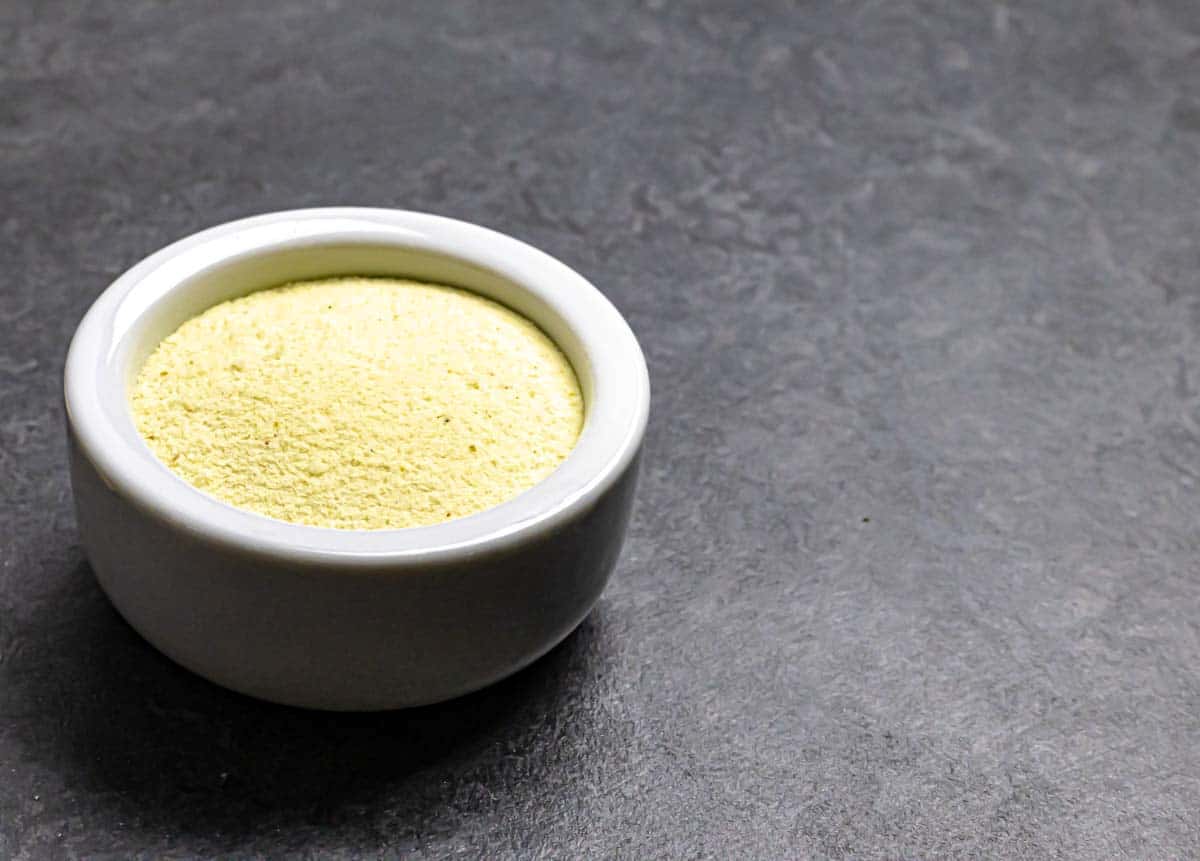
Use asafoetida in these favorite recipes
📖 Recipe
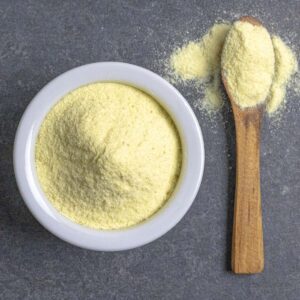
Asafoetida Substitute
Ingredients
Asafoetida substitute (see notes for more ingredient suggestions)
- 1 teaspoon garlic powder
- 1 teaspoon onion powder
- ½ teaspoon powdered porcini mushrooms (optional, but adds extra umami. Try with powdered shiitaki or oyster mushrooms.)
- ¼ teaspoon kala namak black salt (optional for extra umami flavor. Or use kala namak in place of regular salt in your recipe. Read more about kala namak in my Ingredient Spotlight.)
Low-FODMAP Asafoetida substitute (see notes for more ingredient suggestions)
- 1 tablespoon dried chives (best if powdered in a mortar and pestle or spice grinder)
- 1 teaspoon celery seed (ground)
- 1 teaspoon powdered porcini mushrooms (optional, but adds extra umami. Try also with powdered oyster mushrooms.)
- ¼ teaspoon kala namak black salt (optional for extra umami flavor. Or use kala namak in place of regular salt in your recipe. Read more about kala namak in my Ingredient Spotlight.)
Instructions
- Add all ground or powdered ingredients to a small bowl
- Mix until thoroughly combined
- Store in an air tight spice jar
- Use ½ teaspoon in place of every ¼ teaspoon of asafoetida (and adjust to taste)
Notes
Here are some additional options to use as an asafoetida spice substitute
- If you are not following a low-FODMAP Diet, you can use garlic powder and onion powder to impart a similar flavor. You can use them each independently, or combine the two. Since hing is so strong, and used in such small quantities, you will want to use a bit more onion and garlic. Start small so as not to over-power your dish.
- Powdered or fresh chives - If using dried chives, you can create your own powdered chives by grinding them in a spice grinder or mortar and pestal. Once powdered, start with the same quantity as the recipe calls for asafoetida, then add more to your taste. When using fresh, chop finely and use twice as much as the recipe calls for.
- Fresh, powdered or dried leek - use about 3 times the amount of leek in place of asafoetida that the recipe calls for. If using fresh, chop very fine, and be aware that leek will add additional volume your recipe. If you follow a low-FODMAP diet, powdered or dried leek may not be a FODMAP-friendly spice, as the white part of the leek is often included in most products.
- Fennel Seeds - use sparingly, starting with half the quantity of asafoetida your recipe calls for. It is a bit sweeter, you can grind it into a powder using a mortar and pestal or spice grinder, or you can buy ground fennel seed.
- Shallots - these are a relative of onions and part of the Allium family. Slice thinly and sauté in butter, ghee or oil. Quantity to use depends on your taste. Dried shallots are also a great option. You can grind these in a spice grinder or use a mortar and pestle to make a powder, to distribute their flavor throughout the dish. Avoid these for low-FODMAP.
- Onion paste - puree sautéed onions in a food processor, and add to taste in your recipe - or purchase onion paste online. Skip this one for low-FODMAP.
- Garlic scape powder - this is a great low-FODMAP seasoning. Use in a 4:1 ratio for asafoetida substitution.
- Garlic flakes - use as a simple substitute. Use 1 teaspoon for each ¼ teaspoon of asafoetida in a recipe. Keep in mind, garlic is high-FODMAP.
- Celery seed powder - use twice the quantity as asafoetida in your recipe
- Consider using kala namak black salt in place of regular salt and adding ground, dried porcini, dried oyster mushroom powder or dried shiitake mushroom powder to your recipe for extra umami. These are all staples in my house and I add them to many spice blends and recipes. Read more about kala namak black salt, and see additional spice blends in my Ingredient Spotlights.
Nutrition
*Net carbs = carbohydrates - fiber
Nutritional information is an estimate, calculated using online tools and does not include optional ingredients unless otherwise indicated.





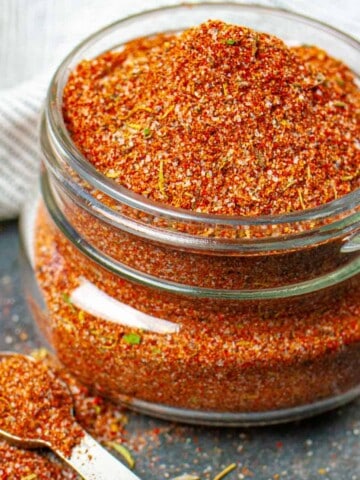
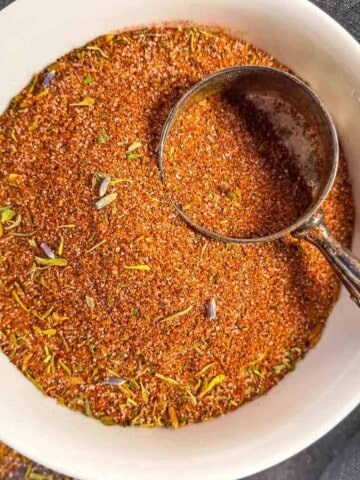
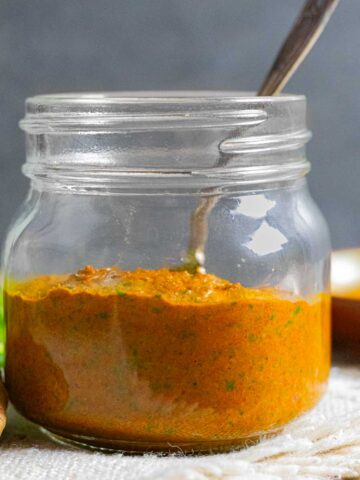
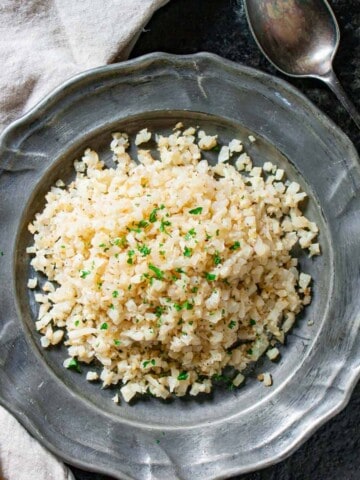
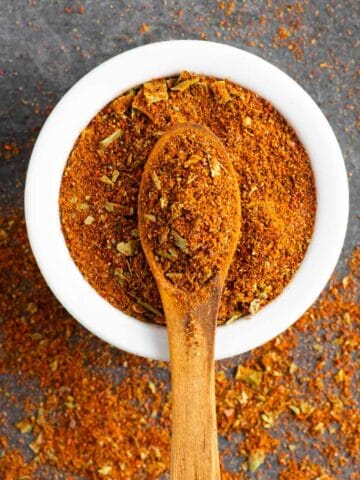
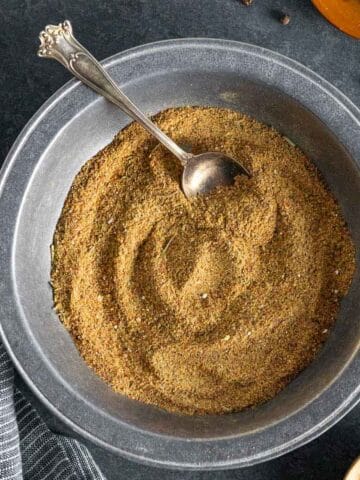
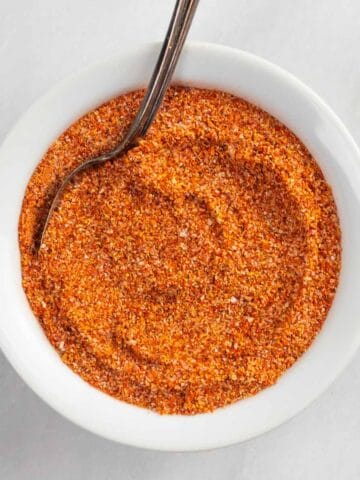
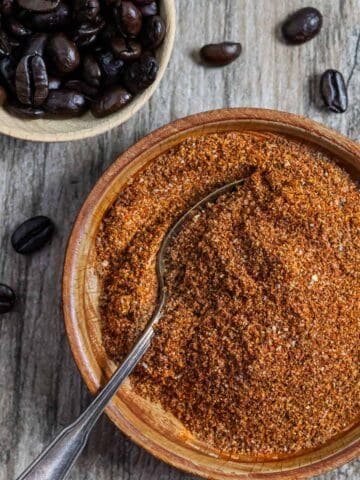
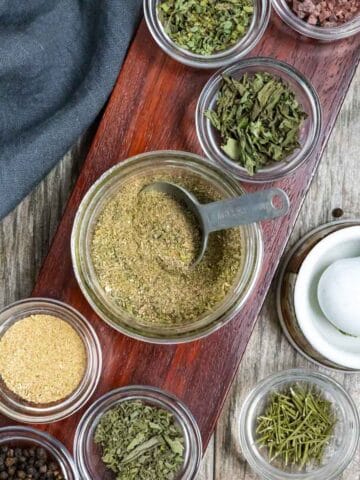
Comments
No Comments